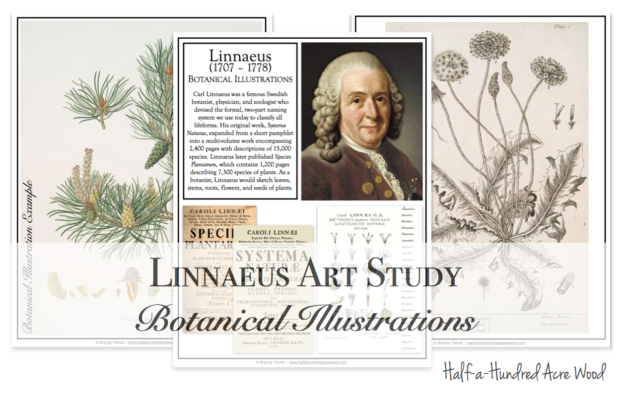
So… it’s December and we’re studying flowers. Not real ones, though. There just aren’t a whole lot of real flowers blooming in middle Tennessee right now. I had all these ideas – a poinsettia, a pine cone (but we don’t have any pines growing close to us), or even a cedar (which is not nearly as interesting as a flower). But as I considered our options, I thought about the skill I’d like for us to learn with the Linnaeus art project. I’m not concerned so much about illustrating all the details for a real-life blooming plant right now, but, rather, I want them to realize they can sketch plants and the different parts of plants that they come across during our nature walks. We may even notice things we’ve never noticed before if we just look at God’s creation from a different angle. And if we spark the interest now, it will make it even easier to revisit the thought of drawing botanical illustrations when the Daffodils start to bloom in late February.
So… we used artificial flowers. And that’s how I justified it. (haha)
Not only that, but this granted the opportunity for us to further explore poppies, and I just loved the thought of us working on our World War I “In Flanders Fields” copywork while drawing poppies to illustrate it. Poetry, art, science, history. I just love beautiful stuff like this!
So let me take a moment to share our artificial botanical illustrations study…
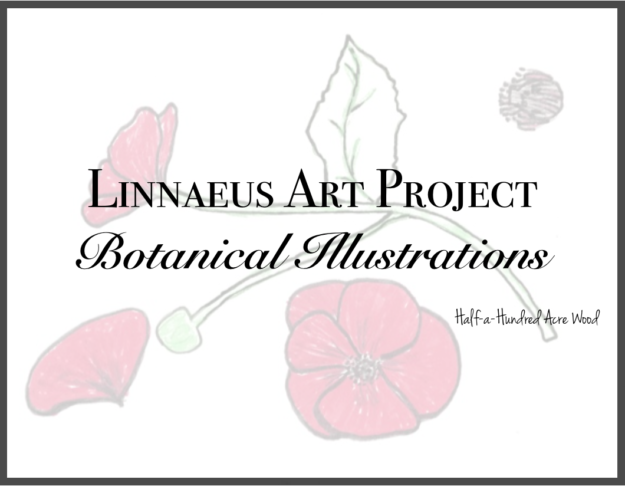
Before embarking on our art project, we took a moment to talk about Carl Linnaeus, the scientist behind the classification of living things. The Linnaeus Picture Study pages in our Great Artists Picture Study Packet includes a portrait of Linnaeus along with images from his books Systema Naturae and Species Plantarum.
On subsequent pages, I included public-domain botanical illustrations from various artists to provide students with examples of how to draw a botanical illustration. Note: Only the first page of this packet has Linnaeus illustrations. It was difficult to confirm illustrations that can be solely attributed to Linnaeus, so I just selected pages from his books, Systema Naturae and Species Plantarum. All of the other images in the packet are public domain images from the NYPL digital collections. These are not Linnaeus images, but they are better examples of botanical illustrations for the purpose of taking students through this exercise.
You can also refer to this website for great botanical illustrations in the form of Plant ID pages.
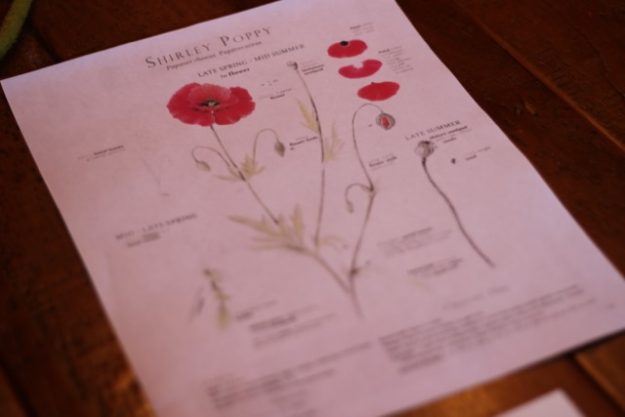
Linnaeus Art Project Supplies
- Linnaeus Art Study Pages from the Great Artists Picture Study Packet and/or Plant ID Pages
- Silk Poppy Flowers
- Coloring pencils and/or markers
- Paper, cardstock, watercolor paper, or nature sketch journal
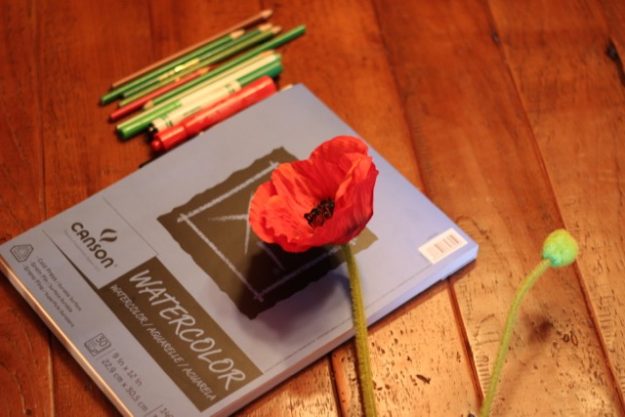
Our first step was to draw the complete flower and then sketch the leaf, petals, bud, and/or pistil/stamen.

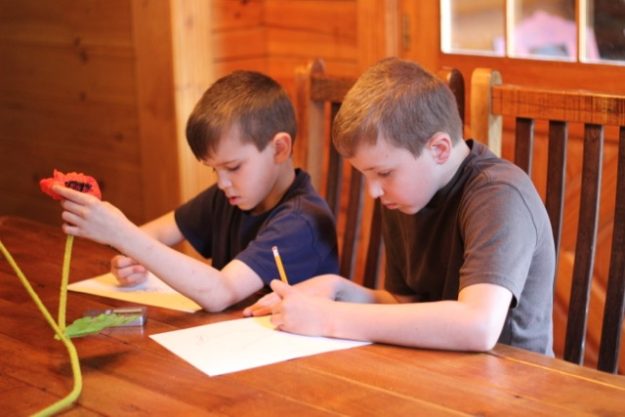
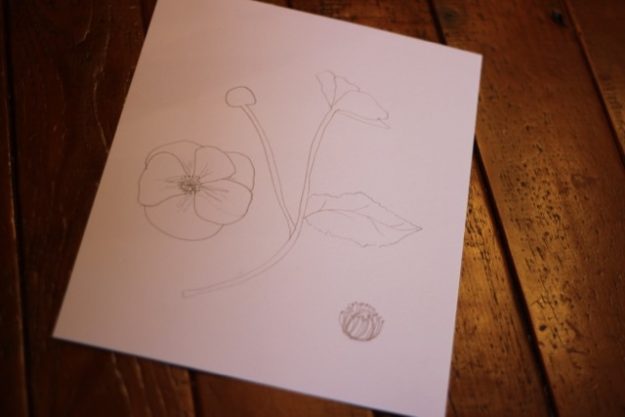
After our sketches were complete, we used a combination of markers and colored pencils to finish our illustrations.

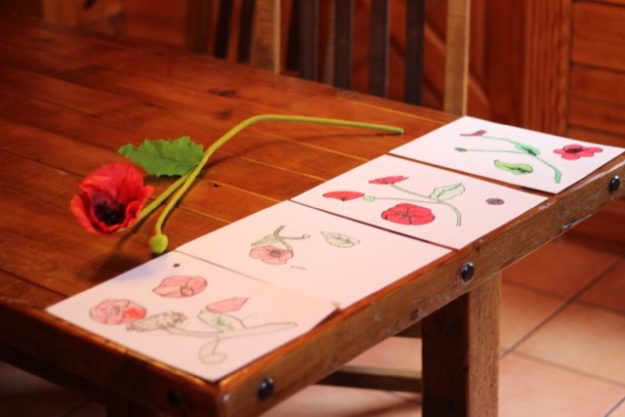
And that was it! It was a simple project and allowed us to discuss how scientists often illustrate what they’re studying. (An added bonus: We also recited the classifications of living things and flower parts from last year’s science memory work.)
Other ideas
If you have access to pines or evergreens (or if you are doing this in a different season other than winter), you might want to attempt this art project with real specimens. You can also use the botanical illustration pages (or plant ID pages) as a guideline for sketching a pine or flower. If you decide to attempt a poppy as you study World War I, you might also check out our free In Flanders Field World War I Poetry copywork and coloring pages. If you’re looking for a couple of great picture books for World War I study, we’ve enjoyed In Flanders Fields: The Story of the Poem by John McCrae and Where Poppies Grow by Linda Granfield.

Another way to expand upon this study is by using our Great Artist Notebooking Pages.
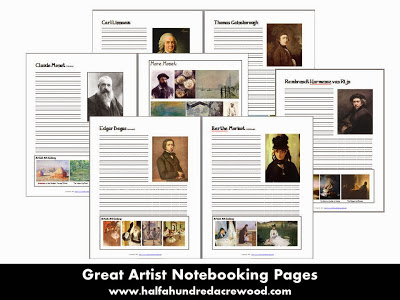
For more art project ideas, visit Great Artists Study: Impressionists. Also check out Art Appreciation through Art History!
Affiliate links are used in this post. See our full disclosure for additional details.
